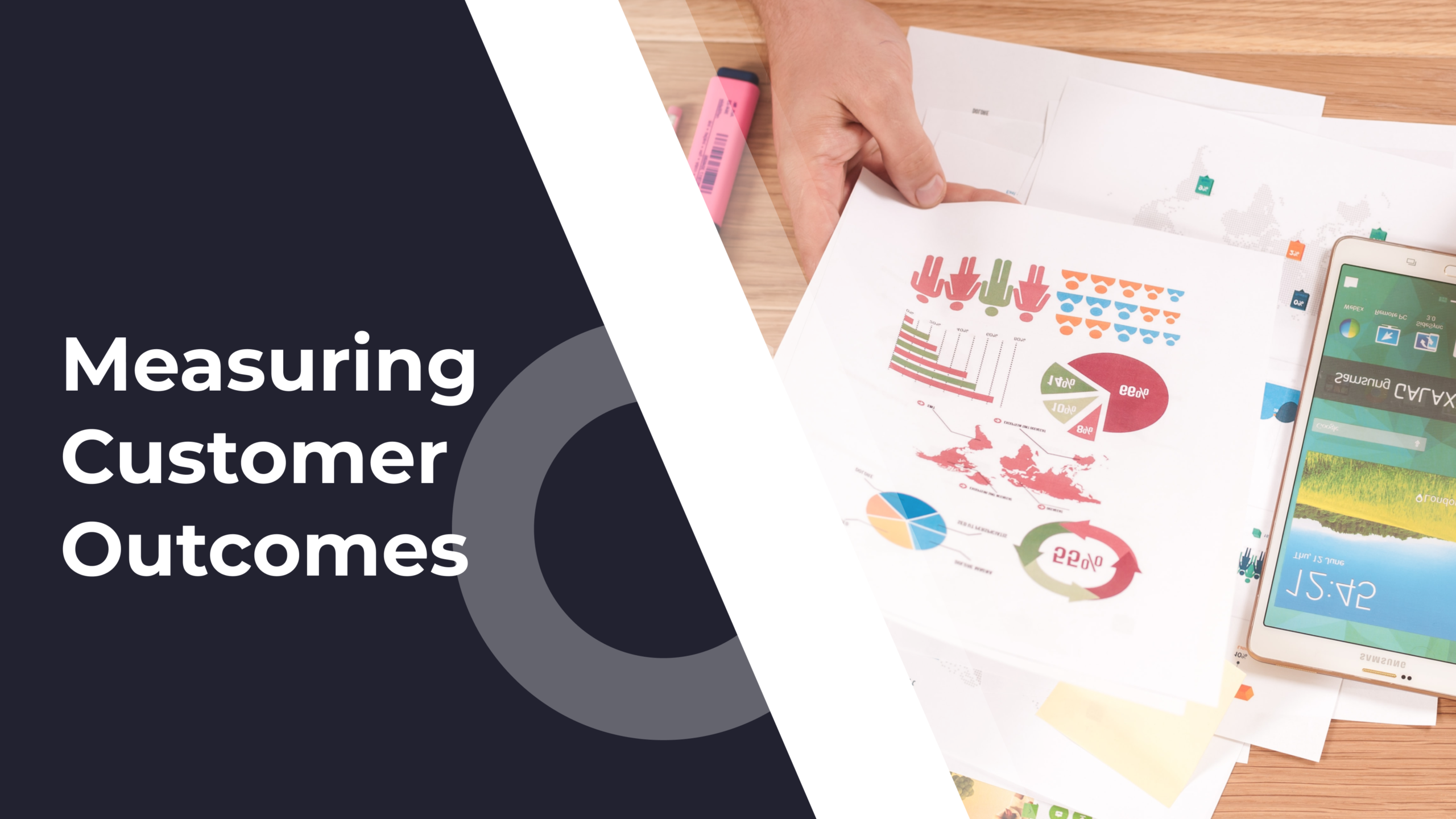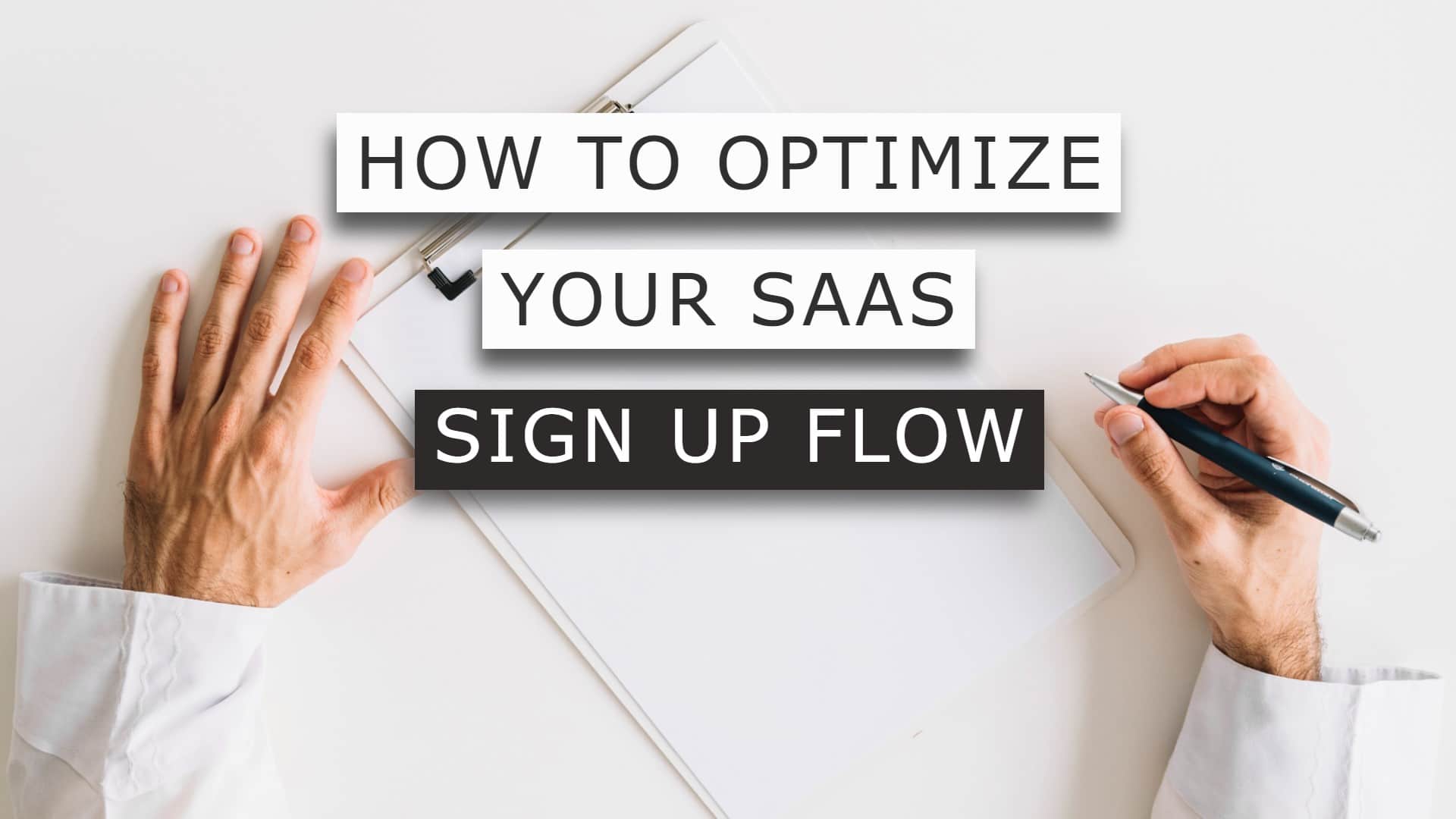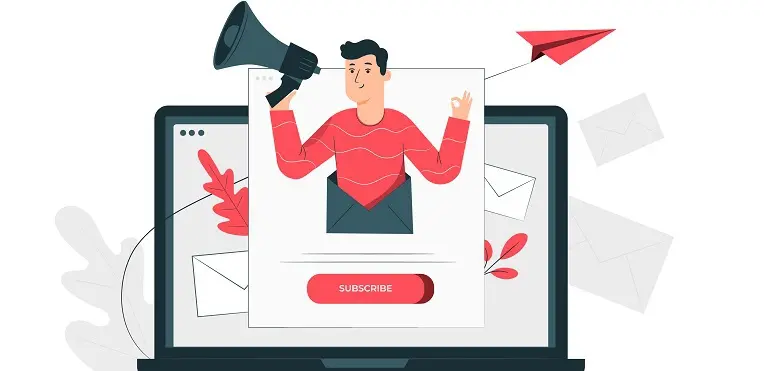While there are still plenty of traditional software vendors out there, the software subscription model is becoming more and more common. Some of the biggest software vendors have either converted their traditional software to software-as-a-service (SaaS) or supplemented their long-term offerings.
Why is the SaaS model becoming more popular?
Because in many cases, it’s a more effective means of both supporting customer success and generating recurring revenue.
But making the change from traditional to subscription models isn’t easy. There are a lot of things to think about, and every company faces a unique set of challenges. To help you in your own transition, we’ve identified five steps that will help you through the process. And we’ve included advice and stories from real-world companies that have made the transition.
1. Plan For Sweeping Business Change
As you might expect, making the transition to SaaS is a big change in your company. But you might not realize just how big. It requires changes from the mindset in the executive suites all the way down to the expectations of frontline customer support.
In their white paper Transition to SaaS, Aspire lists technical, architectural, business, and operational challenges to making the transition. Those areas cover a huge portion of your company, and the change will involve almost everyone working there.
If anyone in your company isn’t on board with this change, you’re going to find it difficult to keep them motivated and get top-quality work when you need it most. So you’ll want to communicate your decision as effectively as possible.
That means telling everyone in your company what’s coming, why you decided to make the change, and how it’s going to affect their jobs. You might be surprised at how invested people are in your current way of doing business, so it’s a good idea to reassure everyone that they’re still important and their skills are needed.
This is going to involve more than just your salespeople. Your entire company will need to shift its focus. For example, you’ll need a more robust customer success program, because continued success with your product is necessary to keep people renewing their licenses.
That requires different priorities among your customer support team, the creation of a customer success team, and possibly customer success training for all customer-facing employees.
Once you’ve started building a roadmap for the transition to SaaS (which we’ll talk about in a moment), you’ll have a better idea of what changes are coming for your company. But it’s important to go into this process understanding that you’ll need a totally new mindset to succeed.
2. Decide On Offerings
This step might seem easy—you’re going to offer the same pieces of software that you always have, but now they’re going to be subscription-based instead of one-time licenses, right?
Don’t fall into this trap. While you might initially plan on keeping your offerings the same, there’s evidence that multiple other options might be better. For example, Nurkka, Waltl, and Alexy point out that both AutoDesk and Splunk had great success with offering both subscription and traditional licenses. This is a strategy that you might be able to take advantage of if you think your customers see significant value in perpetual licenses.
Microsoft maintains this model with its Office 365 subscriptions:
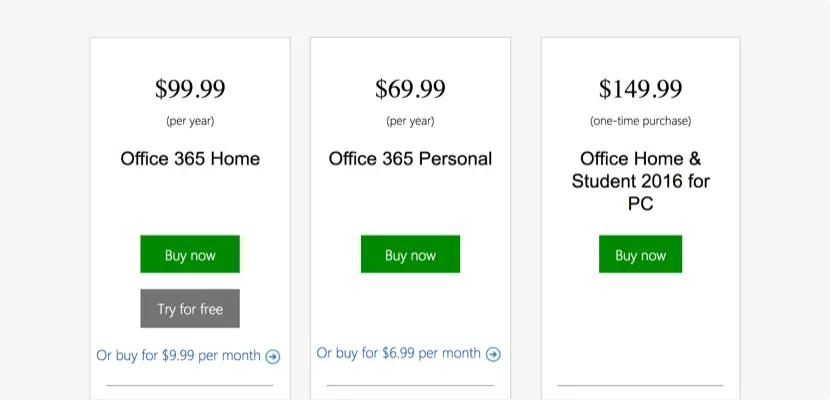
Of course, offering both product types side by side can be quite expensive, both in terms of investment and effort. So you’ll have to take that into account as well.
Another consideration Nurkka, Waltl, and Alexy bring up is whether companies should transition their current software offerings into service-based models or to release new products with this model.
Again, this is up to you, but the authors recommend releasing new products under the SaaS model instead of converting older products (when possible). This helps transition customers into the new sales model, allows salespeople to continue selling the product that they’ve gotten good at selling, and doesn’t radically change the function of the company overnight.
Even if you do decide to phase in the switch to SaaS, you’ll still need to figure out exactly what you’ll be offering as a service. Microsoft, for example, when switching to Office 365 as a service-based model, decided to offer the entire Microsoft Office Suite with its subscriptions. It could have instead offered plans for individual pieces of software, like Adobe’s Creative Cloud.
Making this decision for your company requires a deep understanding of your customers, what they want, and what you can provide as a service. Keep in mind that there are always a lot of options for what you offer; it could be the same as your previous software product, a selection of smaller services that are related, or something completely new.
3. Hire People With The Right Skills
A software subscription model requires a different set of skills than a traditional software sales model. You might think that you already have the expertise in your company. And that might very well be true.
But let’s take a look at Kronos. This was a very large company—over 5,000 employees. And to get the expertise in SaaS that they wanted, they acquired an entire SaaS company. That should tell you how valuable SaaS experience is in this process. Training can go a long way. But proven experience and skills can’t be beaten.
Many of the requisite skills are technical in nature; you may need software developers to build new apps and delivery systems. Having some technical skills in cloud systems will also be useful (though we’ll talk about that more in a moment).
Marketing a SaaS app is different from marketing a traditional piece of software, and you may want to bring on someone with experience to help in that department. And you may need to hire a customer success team to handle the increased emphasis on customer success (or, at the very least, complete some training with your existing staff).
Fortunately, some of the tech expertise that you’ll need can be gained by partnering with a cloud service provider instead of bringing on new talent at your company. Amazon Web Services is one of the biggest providers of cloud services for SaaS companies, and AWS provides training and resources that will help your tech team take full advantage of its offerings.
Microsoft’s Azure and Google’s Cloud Platform are also popular options for hosting SaaS apps. Some companies opt to create their own cloud platforms for their SaaS apps, but this will require even more technical expertise. Of course, it also gives you complete control of your distribution and hosting, so there’s an important tradeoff.
So how do you know who you should hire? Your first step should be to ask the people who already work for you. Ask them what they know about SaaS and where there are knowledge gaps in your company. Then work with them to fill those gaps, either by bringing in new talent or through learning and development. And always hire a CSM.
4. Create A Transition Roadmap
By this point in the process, you should have a good idea of what you need to do to transition your company to a subscription model. Creating a roadmap will help you figure out the parts you’re missing and share the plan with your colleagues.
Before we go any further, let’s talk a bit about the word “roadmap.” It’s one of those business jargon words that you hear all the time that nobody bothers to define. A roadmap is simply a document that shows a timeline and the tasks related to it.
You might present it as a Gantt chart, like this Roadmunk map:
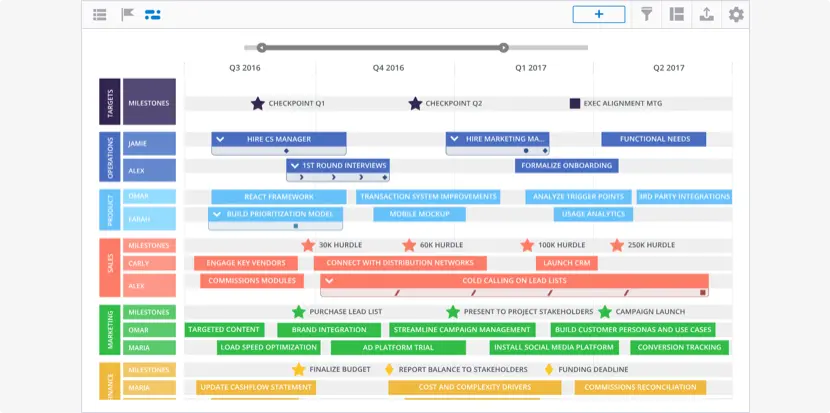
Or as a Kanban-style board, popularized by Trello:
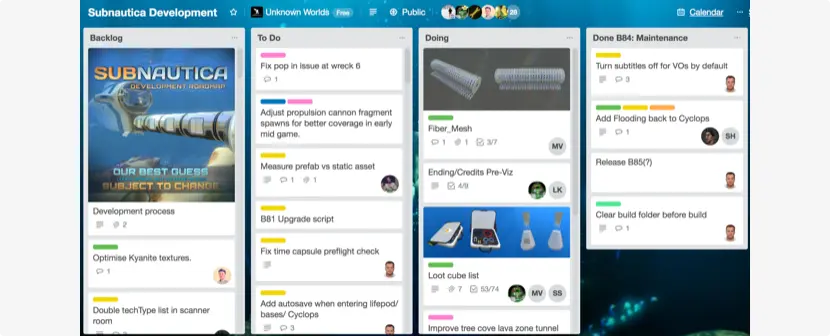
You can even write it all out in text if you want (though having a visual representation helps people understand what they need to do and when.
In the end, a roadmap is just a document that tells people what’s going to happen and when. The exact format isn’t really important, as long as everyone who’s involved in the process knows where to find the information that’s pertinent to them.
(If you’d like to see a few examples of roadmaps, check out ProductPlan’s blog post on the topic.)
Your SaaS transition roadmap should covers every step of the process. How will you start the process? What will happen to your existing software products? Will you be releasing new software? When? Will you need to hire new employees?
When the roadmap is prepared, you’ll have a hefty document that answers all of the questions employees and stakeholders might have about the transition. If you’ve made any financial projections, it’s a good idea to add them to this document too, especially if your stakeholders want to see the plan.
Like any other business roadmap, this will be subject to change. When your circumstances or goals change, be sure to update your transition roadmap. Even small changes to your early plans can have significant effects down the road, so regular reviews will be beneficial.
You may also want to create a roadmap for your customers. Customers may find that their software is no longer offered by the manufacturer, or that there are more options than there were previously. A change this significant can be a bit confusing for customers, so communicating at least part of your roadmap to them can be beneficial as well.
Much of this can be accomplished by your marketing department. Marketing campaigns, email updates, and new information on your website should make it easy for customers to see what’s happening and how it will affect them.
5. Manage Your Expectations
Making a big change like this is exciting for your company. But it’s important to remember that this is often a very difficult process, even with a solid plan in place. Customers and stakeholders might not agree with what you’re doing. Take Adobe, for example. After making the switch to the Creative Cloud, their net income dropped by 35% the following year.
As Nurkka, Waltl, and Alexy point out, though, their stock price tripled over the next four years. If you’ve already determined that switching to a SaaS model is a good idea, you can probably expect positive results. But it’s not likely to be a smooth process the whole way through.
You’ll run into problems that you didn’t expect. And get pushback from members of your team. You may have to repeatedly defend your decision to stakeholders. You might spend more time and money offering two solutions at the same time. And when you make the transition, you could find that your stock drops or you lose customers.
But remember why you started this process in the first place. SaaS is the way of the future, and many companies find that they can better serve customers and support customer success with this model. Keeping this in mind can help you stay the course when it seems like making the transition may have been a mistake.
In the end, you’re moving your company forward. It just takes time.
Start Planning For The Transition To SaaS Today
As you can see, there are a lot of things to think about when you’re planning on making the change to a subscription software model. The points above will guide you, but they’re only a general outline of what you’ll need to do. Because your company has its own processes, offerings, and customers that need specific things during the transition.
Possibly the most important thing to remember during this process is the need for persistence. You may get pushback from customers and stakeholders. Your plans are going to fall through. But if you stick with it and follow the roadmap you’ve created, your transition will be a success.

